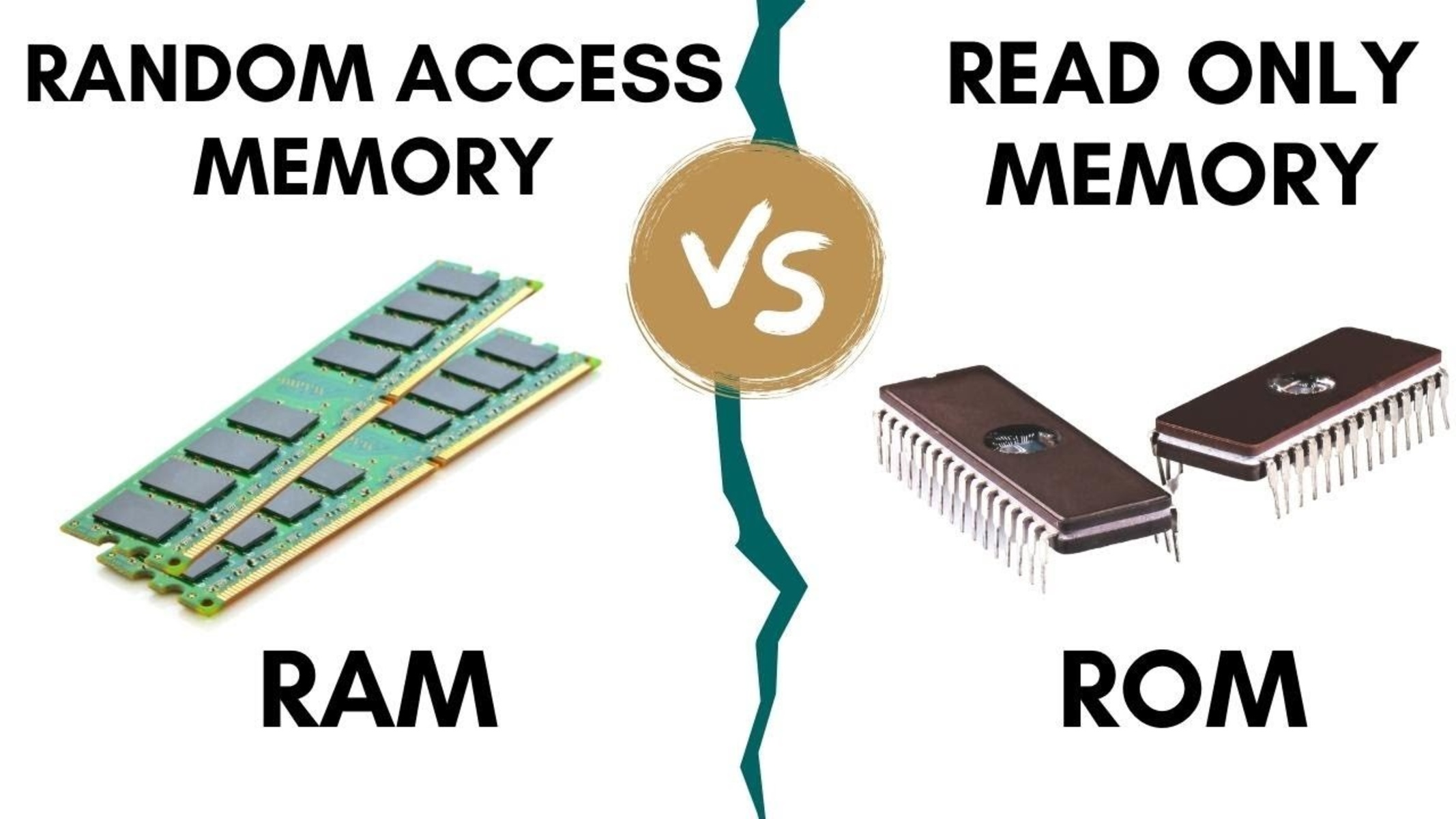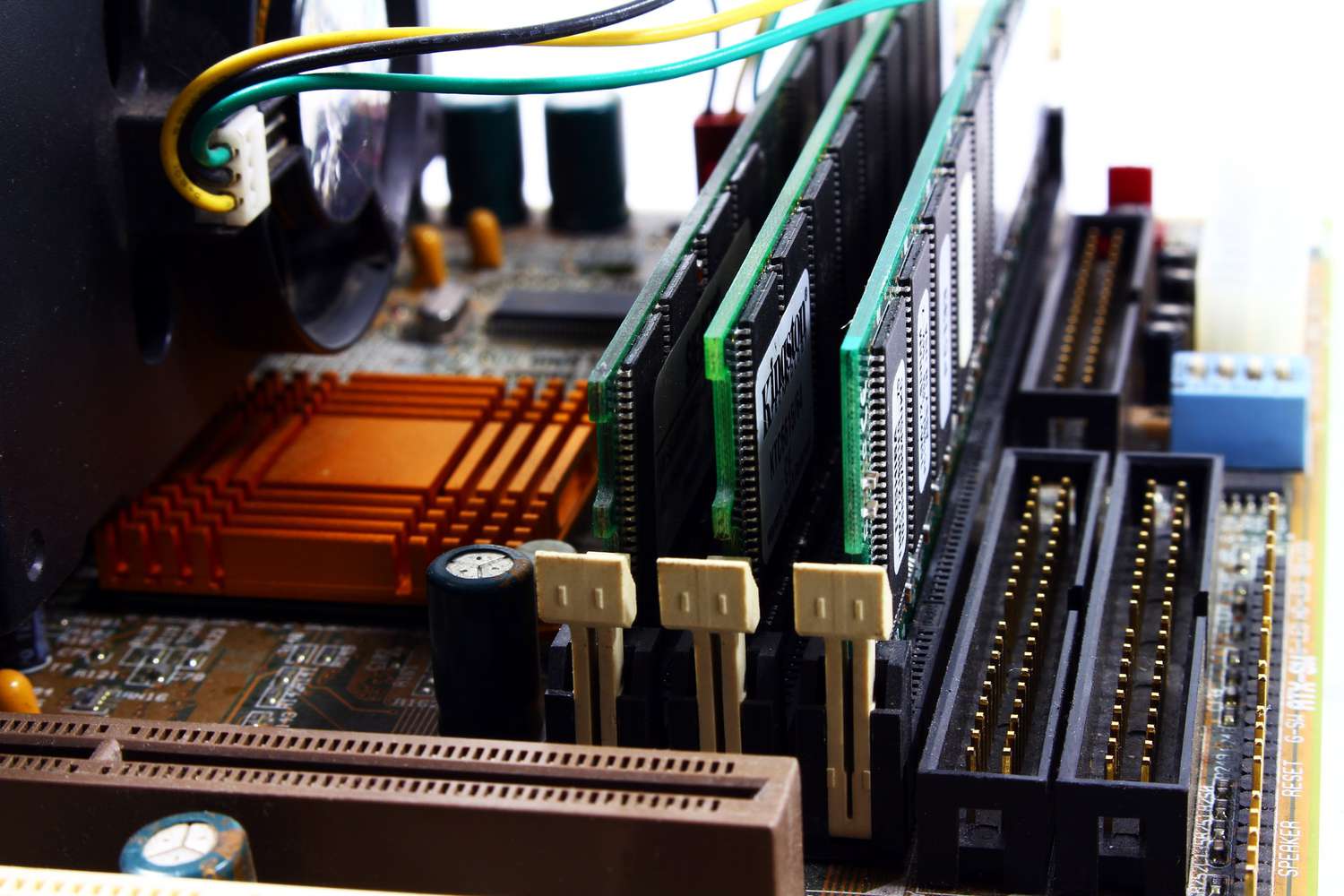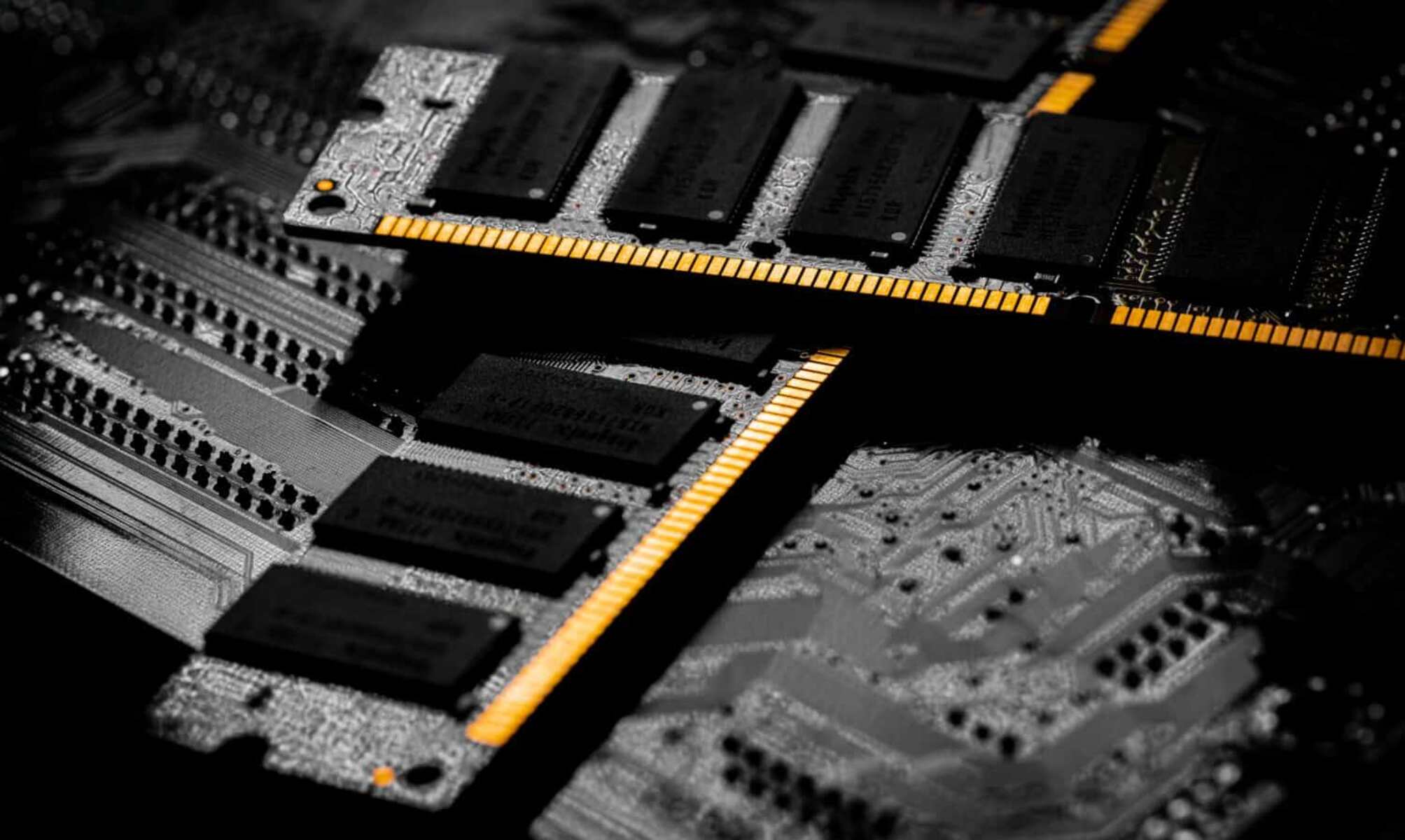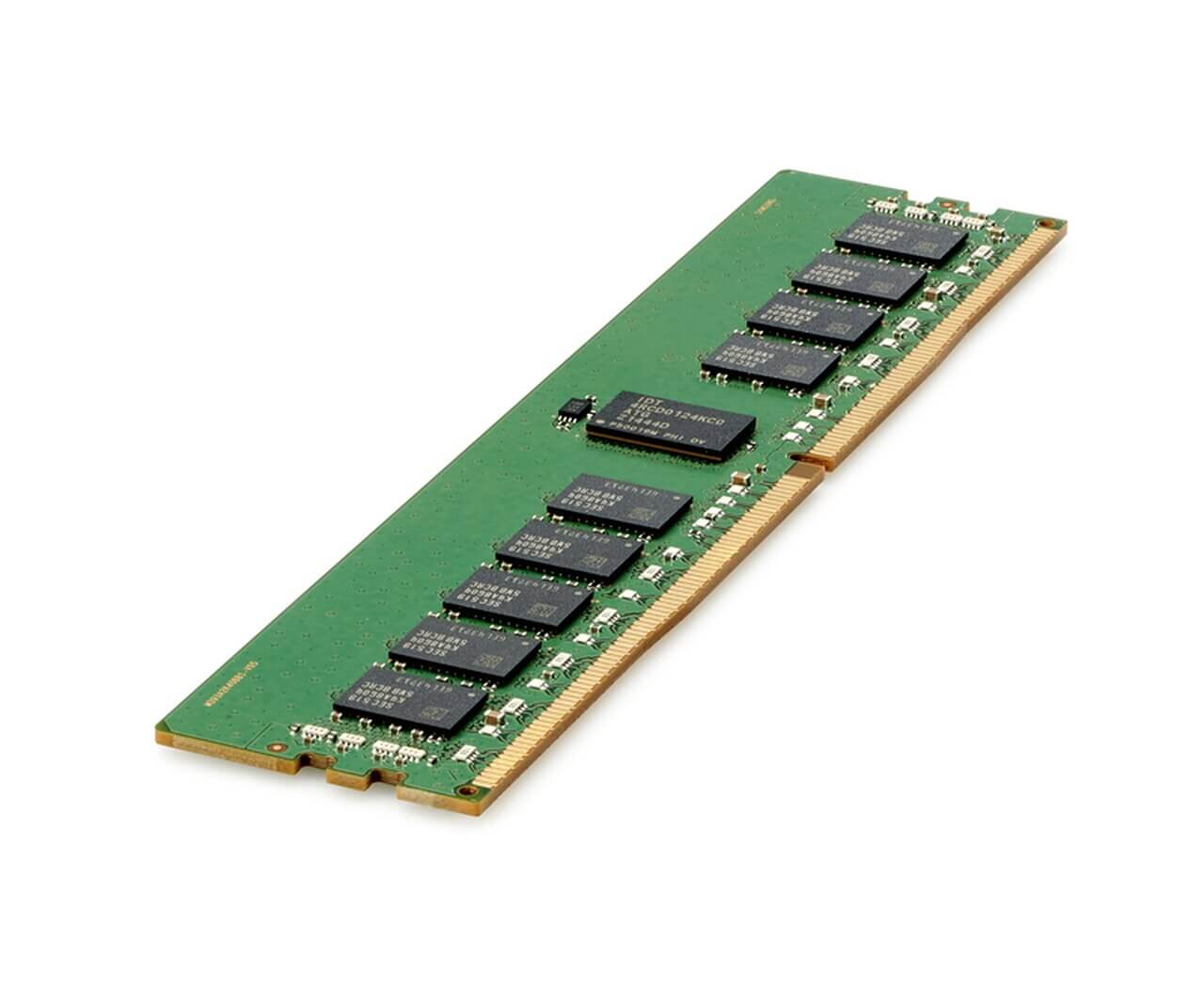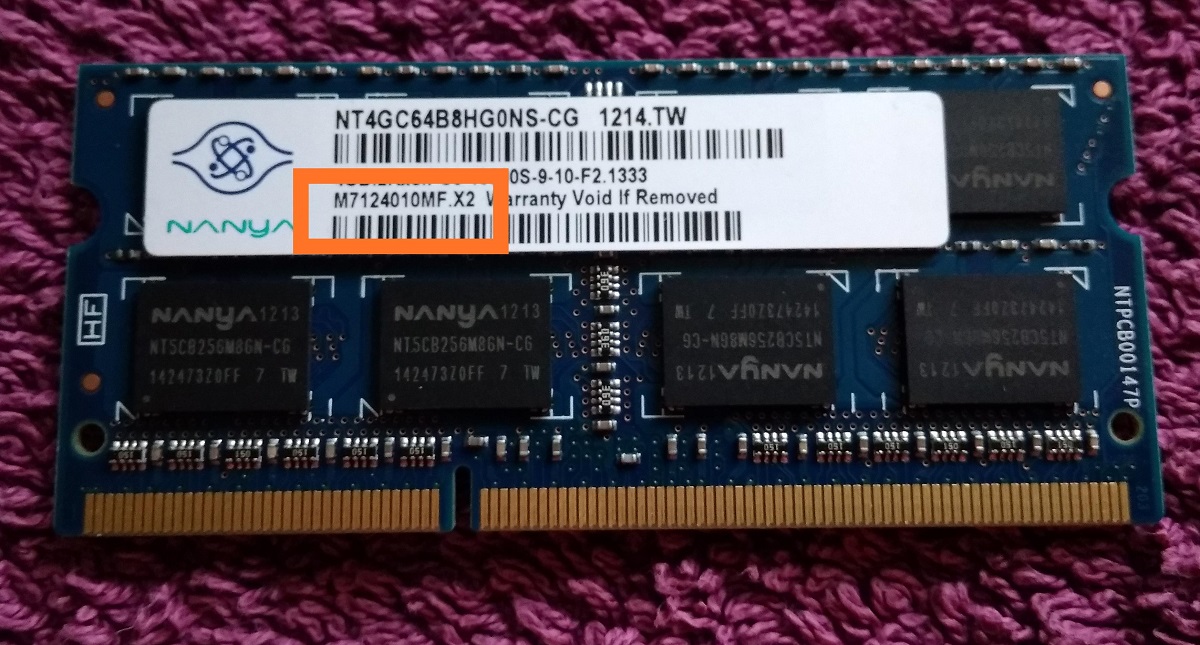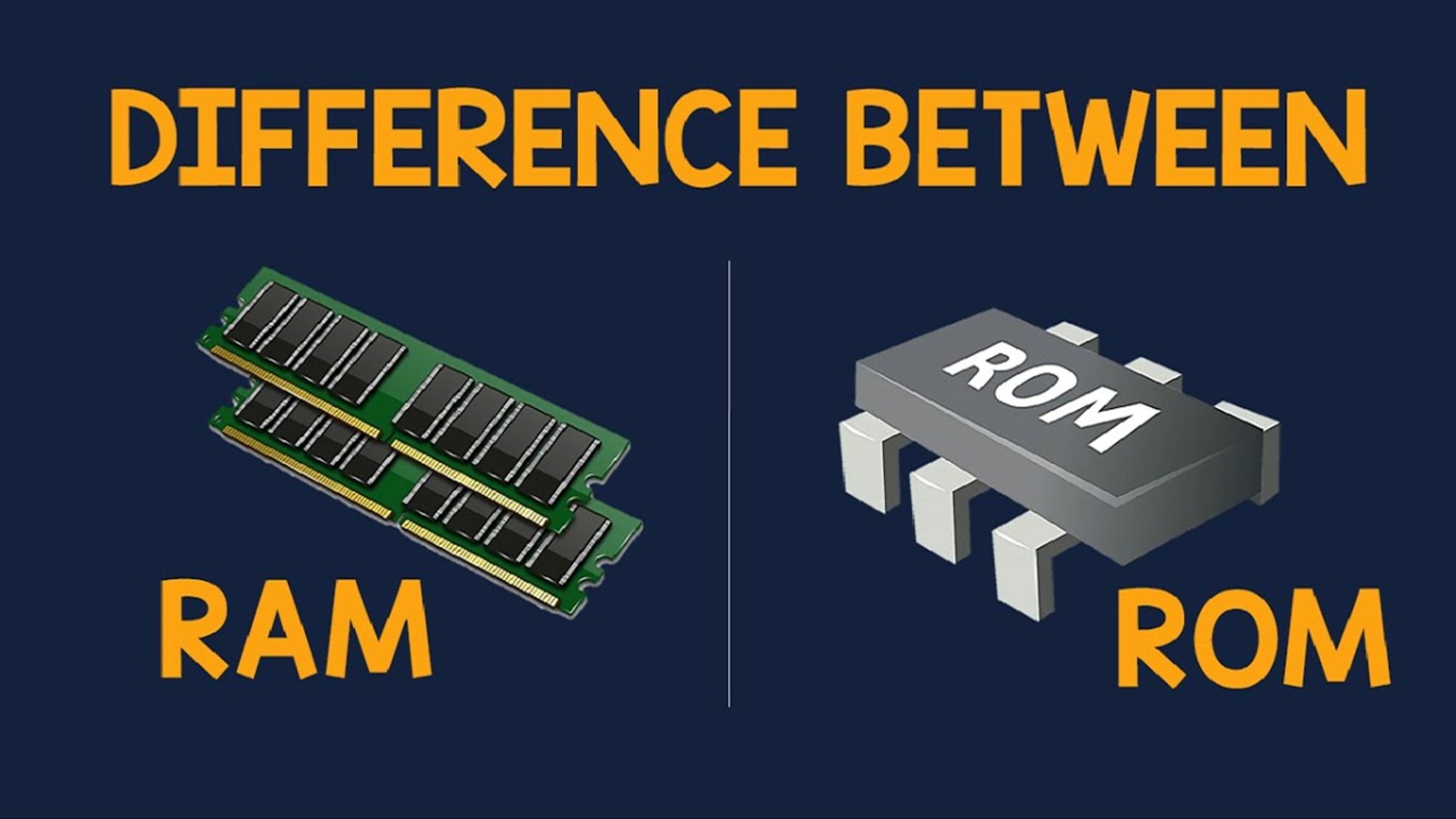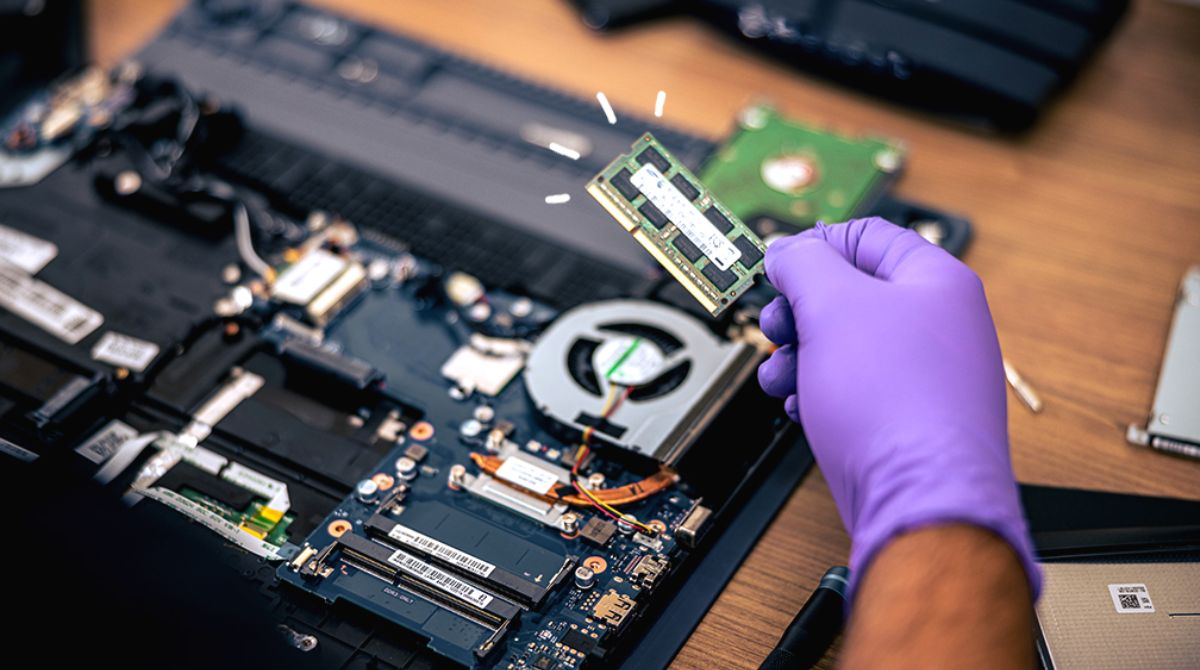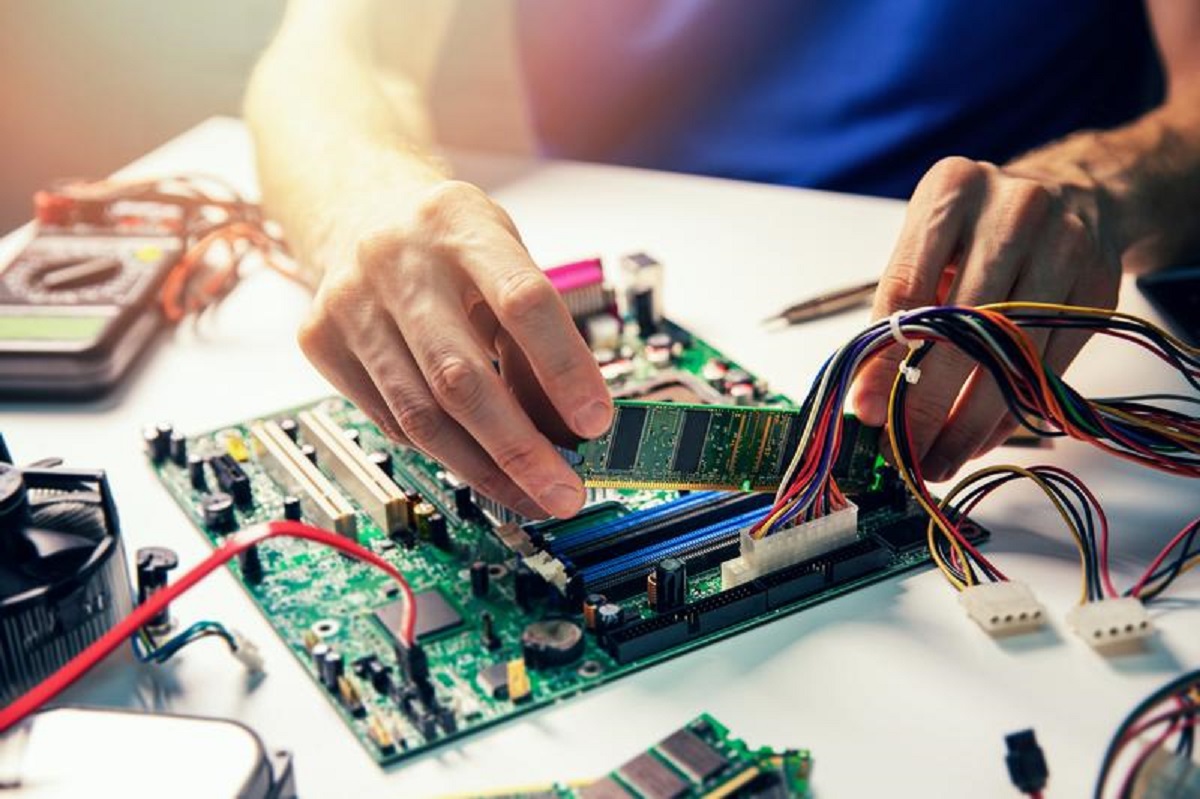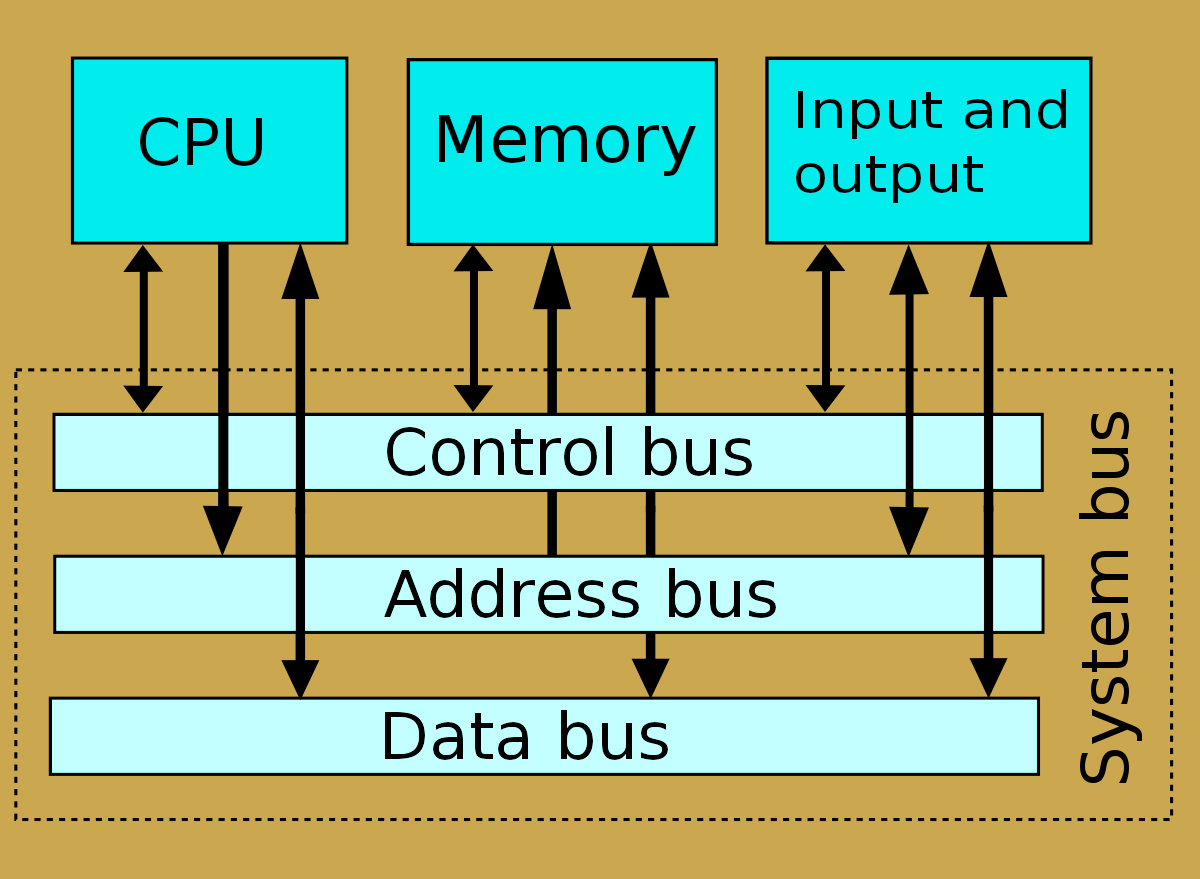Introduction
Welcome to the fascinating world of computer hardware! As technology continues to advance at a rapid pace, it’s crucial to have a solid understanding of the components that make our devices function. Two essential elements of a computer system are memory and RAM. While they may appear synonymous on the surface, there are crucial differences between them that are worth exploring.
Memory and RAM play pivotal roles in the performance and functionality of a computer. They are often used interchangeably, but in reality, they serve distinct purposes. Memory refers to the storage space where data and instructions are saved for quick access by the processor, while RAM — or Random Access Memory — is a specific type of memory that allows the processor to read and write data quickly. Understanding the key differences between memory and RAM is essential for computer enthusiasts, IT professionals, and anyone seeking a deeper understanding of computer hardware.
In this article, we will delve into the definitions of memory and RAM, explore their functions, examine the various types available, and discuss their capacity and speed. By the end, you’ll have a clear understanding of the differences between the two and appreciate their individual importance in the realm of computer hardware.
Definition of Memory
When we talk about memory in the context of computer hardware, we are referring to the storage space where data and instructions are stored for immediate access by the processor. In simple terms, it is the component that allows a computer to retain and retrieve information.
Memory is an essential part of any computer system as it serves as a temporary storage area for data and instructions that the processor needs to access quickly. It can be thought of as the brain of the computer, where information is stored, processed, and retrieved as needed.
Memory consists of a series of memory cells or locations, each capable of storing a specific amount of data. This data can take the form of numbers, letters, commands, or any other form of information that the computer uses. Each memory cell is uniquely identified by an address, which allows the computer to access and manipulate the stored data.
The contents of memory are volatile, meaning that they are lost when the computer is powered off. This is in contrast to permanent storage, such as hard drives or solid-state drives, which retain data even when the power is turned off. As a result, for data to be preserved, it must be saved to a more permanent storage medium, such as a hard drive, before shutting down the computer.
Memory operates at extremely high speeds, allowing the processor to quickly retrieve and manipulate data. It is a crucial component in determining the overall speed and efficiency of a computer system.
Now that we have a clear understanding of what memory is and its basic function, let’s turn our attention to RAM, a specific type of memory that plays a vital role in computer performance.
Definition of RAM
RAM, or Random Access Memory, is a type of memory that provides temporary storage for data and instructions that the processor accesses frequently. It is a crucial component in determining the speed and performance of a computer system.
Unlike other forms of memory, RAM allows for random access, meaning that the processor can read from and write to any location in the memory at a similar speed. This fast and random access is what makes RAM so vital in speeding up data retrieval and processing.
RAM is a volatile form of memory, meaning that its contents are lost when the computer is powered off. This requires data to be saved to a more permanent storage medium, such as a hard drive, to avoid loss of information.
One of the key features of RAM is its ability to store both data and instructions. This allows the processor to quickly access and manipulate the necessary information during program execution. As a result, the more RAM a computer has, the more data it can store and process simultaneously, leading to improved performance and multitasking capabilities.
Another important aspect of RAM is its speed. Compared to other types of storage, such as hard drives or solid-state drives, RAM operates at much faster speeds. This allows for quick retrieval and manipulation of data, reducing the amount of time the processor has to wait for information.
RAM comes in various types, including DDR4, DDR3, and DDR2, each offering different performance levels and compatibility with specific computer systems. The capacity of RAM can range from a few gigabytes to several terabytes, depending on the requirements of the system and the user’s needs.
In summary, RAM is a temporary storage component that provides fast and random access to data and instructions. It is crucial for improving the speed and performance of a computer system, allowing for quick data retrieval and efficient program execution.
Key Differences Between Memory and RAM
Although memory and RAM are often used interchangeably, there are significant differences between the two. Understanding these differences is essential for anyone seeking a thorough understanding of computer hardware. Let’s explore the key distinctions between memory and RAM:
- Function: Memory acts as the overall storage space where data and instructions are stored for quick access by the processor. On the other hand, RAM is a specific type of memory that allows the processor to read from and write to data quickly. While memory provides the foundation for data storage, RAM enhances the performance by providing fast and random access.
- Volatility: Memory is non-volatile, meaning that it retains data even when the computer is powered off. It can hold both temporary and permanent data. In contrast, RAM is volatile, which means that its contents are lost when the computer is turned off. It is designed for temporary storage and quick data access.
- Data Retention: Memory retains data long-term and is typically used for storing files, programs, and operating systems. On the other hand, RAM holds data temporarily while the computer is operational. It serves as a working space for the processor, allowing for faster data access and manipulation.
- Access Speed: Memory operates at slower speeds compared to RAM because it focuses on long-term storage. RAM, on the other hand, operates at significantly faster speeds, allowing for quick data retrieval and processing. This speed advantage makes RAM crucial for improving overall system performance.
- Capacity: Memory capacity is typically much larger than RAM capacity. Computers typically have several gigabytes or terabytes of memory capacity, whereas RAM capacity is typically measured in gigabytes. The larger memory capacity allows for the storage of extensive files and programs, while the RAM capacity determines the multitasking capabilities and overall speed of the system.
These key differences highlight the distinct roles and functionalities of memory and RAM in a computer system. Memory provides the foundation for storage, while RAM enhances performance by facilitating quick data access. Both components work in tandem to ensure the smooth operation of a computer system.
Function of Memory
The function of memory in a computer system is to provide storage space for data and instructions that the processor needs to access quickly. It acts as a temporary workspace where the processor can store and retrieve data during program execution.
Memory plays a pivotal role in the overall performance and functionality of a computer. Here are some key functions of memory:
- Data Storage: Memory serves as the primary storage location for data and instructions necessary for program execution. When a program is running, its instructions and data are loaded into memory, allowing the processor to quickly access and manipulate the required information.
- Quick Access: The primary function of memory is to provide the processor with rapid access to data. Unlike other forms of storage, such as hard drives, which have slower access times, memory allows the processor to retrieve and modify data quickly. This swift access helps in improving the overall speed and efficiency of the computer system.
- Temporary Storage: Memory is designed to hold data temporarily. It acts as a temporary workspace where the processor can store and manipulate data during program execution. This temporary storage is essential for efficient multitasking, as it allows the processor to work on multiple tasks simultaneously.
- Instructions Execution: In addition to data storage, memory also holds the instructions required for program execution. These instructions are fetched from memory and processed by the processor. By storing the instructions in memory, the processor can quickly access and execute them, speeding up program execution.
- Interaction with Other Components: Memory interacts with various components of a computer system. It communicates with the processor through memory buses, ensuring that data and instructions are properly transferred between the two. It also interacts with other storage devices, such as hard drives, to exchange data and facilitate efficient data management.
Overall, the function of memory is to provide a temporary storage space for data and instructions that the processor needs to access quickly. It plays a crucial role in the overall speed and efficiency of a computer system, allowing for quick data access and efficient program execution.
Function of RAM
RAM, or Random Access Memory, serves a vital function in a computer system by providing temporary storage for data and instructions that the processor needs to access quickly. It plays a crucial role in enhancing the speed and performance of a computer system. Here are the key functions of RAM:
- Data Storage: RAM acts as a temporary storage location for data and instructions that the processor is actively working on. It holds the data required for current processes and programs, allowing for quick and efficient access during program execution.
- Fast Data Access: One of the primary functions of RAM is to provide the processor with fast and random access to data. Unlike other forms of storage, such as hard drives or solid-state drives, which have slower access times, RAM allows the processor to retrieve and modify data at much higher speeds. This swift data access is crucial for optimizing system performance and reducing processing time.
- Program Execution: RAM plays a crucial role in executing programs. When a program is launched, its instructions and data are loaded into RAM to facilitate efficient processing. By keeping the program’s instructions and data in RAM, the processor can quickly retrieve and execute them, improving overall program execution speed.
- Multitasking: RAM enables the computer to handle multiple tasks simultaneously. With larger RAM capacity, the computer can store and work on multiple programs and processes concurrently. This allows for improved multitasking capabilities, as the processor can quickly switch between different tasks without significant performance slowdown.
- Caching: RAM is also used as a cache for frequently accessed data. The processor stores copies of frequently used data in RAM, allowing for faster access during subsequent requests. This caching mechanism helps reduce access delays and enhances overall system performance.
- Virtual Memory: RAM also plays a vital role in virtual memory management. When the physical RAM becomes insufficient to meet the demands of running programs, the operating system uses a portion of the hard drive as virtual memory. This virtual memory acts as an extension of RAM, enabling the computer to handle larger datasets and run resource-intensive applications.
In summary, RAM serves as a temporary storage medium that provides fast and random access to data and instructions needed by the processor. Its primary functions include data storage, quick data access, program execution, support for multitasking, caching, and virtual memory management. By having adequate RAM capacity, a computer system can experience improved performance, faster data processing, and enhanced multitasking capabilities.
Types of Memory
Memory in a computer system is available in several different forms, each serving a specific purpose. Let’s explore the various types of memory:
- ROM (Read-Only Memory): ROM is a non-volatile type of memory that stores permanent data and instructions. It is pre-programmed by the manufacturer and cannot be modified or erased by the user. ROM retains its content even when the computer is powered off and is commonly used to store the computer’s firmware, such as the BIOS (Basic Input/Output System).
- RAM (Random Access Memory): RAM is a volatile form of memory that provides temporary storage for data and instructions during program execution. It allows for quick and random access by the processor and comes in various types, such as DDR4, DDR3, and DDR2, offering different performance levels and compatibility.
- Cache Memory: Cache memory is a small and extremely fast type of memory located directly on the processor. It stores frequently accessed data and instructions to reduce memory access time. The cache memory operates at a speed comparable to the processor’s speed, which significantly improves overall system performance.
- Virtual Memory: Virtual memory is a memory management technique that uses part of the hard drive as an extension to physical RAM. It allows the computer to run programs that require more memory than what is physically available. Virtual memory moves data between the hard drive and RAM as needed, providing a larger addressable memory space.
- Flash Memory: Flash memory is a non-volatile type of memory commonly used in devices such as USB drives, memory cards, and solid-state drives (SSDs). It retains data even when the power is turned off and provides faster access times than traditional hard drives. Flash memory is known for its durability and low power consumption.
- Hard Drive: While not a traditional form of memory, the hard drive is an essential component for long-term storage. Hard drives offer large storage capacities at a relatively lower cost compared to other memory types. They are commonly used for storing operating systems, software, documents, and various media files.
These different types of memory each play a crucial role in the functioning of a computer system. From permanent storage in ROM to temporary storage in RAM, and fast caching in cache memory, understanding the distinctions between these memory types is key to comprehending the overall memory hierarchy within a computer system.
Types of RAM
Random Access Memory (RAM) comes in different types, each offering varying performance levels and compatibility. Let’s explore the common types of RAM:
- DDR4 (Double Data Rate 4): DDR4 is the latest and most widely used type of RAM. It offers improved speed and efficiency compared to its predecessors. DDR4 RAM modules provide faster data transfer rates and higher bandwidth, resulting in enhanced system performance. It is compatible with modern computer systems but may not be backward compatible with older motherboards that support DDR3 or DDR2 RAM.
- DDR3 (Double Data Rate 3): DDR3 RAM was the standard before DDR4 became prevalent. It offers decent performance and is still found in many older computer systems. While DDR3 RAM operates at lower speeds compared to DDR4, it is relatively more affordable and compatible with a wide range of motherboards that support DDR3 technology.
- DDR2 (Double Data Rate 2): DDR2 RAM was a popular type of memory before DDR3 took over. It has slower data transfer rates compared to DDR3 and DDR4 RAM. DDR2 RAM is mostly used in older computer systems that are not compatible with newer memory technologies. While DDR2 RAM is less common today, it can still be found in older computer systems or for specific purposes that do not require high-performance memory.
- SODIMM (Small Outline Dual Inline Memory Module): SODIMM RAM is a smaller form factor of memory primarily used in laptops and small form factor computers such as mini PCs. It is physically smaller than regular DIMM modules and has fewer pins. SODIMM modules are available in various types, including DDR4, DDR3, and DDR2, and offer similar performance characteristics to their regular DIMM counterparts.
- ECC (Error-Correcting Code) RAM: ECC RAM is a type of memory that includes error detection and correction capabilities. It is commonly used in servers and mission-critical systems where data integrity is of utmost importance. ECC RAM can detect and fix errors in real-time, ensuring that the data stored in memory remains accurate.
- Registered (or Buffered) RAM: Registered RAM is a type of memory that features a register between the memory module and the memory controller. It helps reduce electrical loading on the memory bus, allowing for increased system stability and scalability. Registered RAM is commonly used in servers and high-end workstations that require large amounts of memory.
These various types of RAM cater to different system requirements, from mainstream consumer desktops to high-performance servers. It is essential to consider compatibility with the motherboard and the specific needs of the computer system when selecting the appropriate type of RAM for optimal performance.
Capacity and Speed
The capacity and speed of memory and RAM are critical factors in determining the overall performance and efficiency of a computer system. Let’s explore the importance of capacity and speed in these components:
Capacity:
Memory capacity refers to the amount of data that can be stored in the memory of a computer system. It is typically measured in bytes (such as gigabytes or terabytes) and determines the overall storage capacity of the system. The capacity of memory varies depending on the type of memory and the specific capabilities of the computer hardware.
RAM capacity, on the other hand, refers to the amount of RAM installed in a computer system. It indicates the quantity of temporary storage available for the processor to store and access data during program execution. RAM capacity directly impacts the system’s multitasking capabilities and the amount of data that can be processed simultaneously.
Having sufficient memory capacity is crucial for seamless operation, particularly when running resource-intensive programs or working with large datasets. Insufficient memory capacity can lead to performance bottlenecks, frequent system slowdowns, and potential crashing or freezing of programs. Therefore, it is essential to consider the nature of tasks and the specific requirements of the system when determining the adequate memory capacity.
Speed:
The speed of memory and RAM refers to the time it takes for data to be accessed, read, or written. It is measured in terms of the memory’s clock speed, which determines the number of data transfers that can occur within a specific time frame. Higher clock speeds result in faster data access and processing.
Faster memory and RAM speeds lead to improved system performance, as data can be accessed and manipulated more quickly. This is particularly important for tasks involving large file transfers, data-intensive applications, and gaming. Faster memory speed helps reduce latency and ensures smooth and responsive system performance.
When choosing memory and RAM, it is crucial to consider the compatibility of the components with the computer system. The motherboard, chipset, and processor specifications determine the maximum supported memory and RAM speeds. It is often recommended to match the memory and RAM speeds with the supported specifications to achieve optimal performance.
In summary, the capacity and speed of memory and RAM are vital considerations for system performance. Sufficient memory capacity allows for the storage and access of data, while faster memory and RAM speeds facilitate quick data retrieval and efficient data processing. Balancing these factors ensures a smooth and responsive computing experience for a wide range of tasks and applications.
Associative Memory
Associative memory, also known as content-addressable memory (CAM), is a specialized type of memory that allows for rapid searching and retrieval of data based on its content. Unlike traditional memory, which relies on explicit memory addressing, associative memory enables data retrieval through content-based referencing.
Associative memory works by associating data with tags or keywords, enabling the memory to search for and retrieve data based on these associations. When a search is performed, the memory compares the search query with the stored tags and retrieves the corresponding data. This form of memory organization is particularly useful for applications that require fast and efficient retrieval of information.
Associative memory finds applications in various fields that demand quick data retrieval or pattern recognition. Here are a few examples:
- Database Searching: Associative memory is widely used in databases for quick searching and retrieval of records. Instead of scanning through the entire database sequentially, associative memory allows for immediate identification of data based on its content, significantly reducing search time and improving efficiency.
- Hardware Caches: In computer architecture, associative memory is often utilized in hardware caches. Caches are high-speed memory components that store frequently accessed data from a slower main memory. Associative memory allows the cache to quickly identify and retrieve data based on content, reducing the time required to access data from slower memory sources.
- Pattern Recognition: Associative memory plays a crucial role in pattern recognition applications such as image and speech recognition. By associating patterns or features with particular data, associative memory facilitates rapid identification and classification of similar patterns, enabling quick and accurate recognition.
- Network Routing: In networking, associative memory is utilized for routing decisions. By associating routing information with unique identifiers, such as IP addresses, associative memory enables routers to quickly identify and select the appropriate path for data transmission, improving network efficiency.
- Artificial Intelligence and Machine Learning: Associative memory is essential in AI and machine learning applications. It allows for efficient storage and retrieval of learned patterns, facilitating quick decision-making and pattern matching processes in various AI algorithms and models.
Associative memory offers the advantage of fast and content-based data retrieval, which is particularly beneficial in applications that require rapid searching or pattern recognition. While traditional memory organization relies on explicit memory addresses, associative memory provides a more dynamic and flexible approach to data retrieval based on associations and content similarity.
Conclusion
Memory and RAM are vital components of a computer system, each serving specific functions to ensure efficient data storage and processing. While memory provides the overall storage space for data and instructions, RAM plays a critical role in facilitating quick data access and manipulation by the processor.
Understanding the key differences between memory and RAM is essential in gaining a comprehensive understanding of computer hardware. Memory acts as the foundation for data storage, while RAM enhances system performance by providing fast and random access to data for immediate processing.
Various types of memory and RAM exist, each catering to different requirements and applications. ROM offers permanent storage, while RAM provides temporary and fast storage. Cache memory and virtual memory enhance data retrieval speed and support multitasking capabilities. Different types of RAM, such as DDR4, DDR3, and DDR2, offer varying performance levels and compatibility with different computer systems.
Capacity and speed are two vital factors in memory and RAM. Having sufficient memory capacity ensures adequate storage space for files and programs, while faster memory and RAM speeds facilitate quick data retrieval and processing.
Additionally, associative memory, or content-addressable memory, offers rapid data retrieval based on content associations, enabling quicker searching and pattern recognition in various applications.
Overall, memory and RAM play critical roles in computer systems, contributing to the speed, efficiency, and performance of data storage and processing. By understanding the functions, types, capacity, and speed of memory and RAM, individuals can make informed decisions when selecting and optimizing computer hardware for their specific needs.







